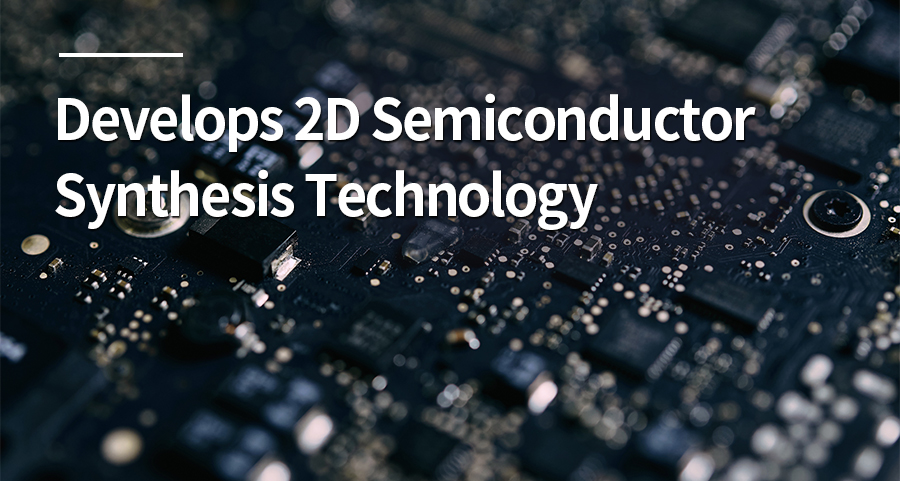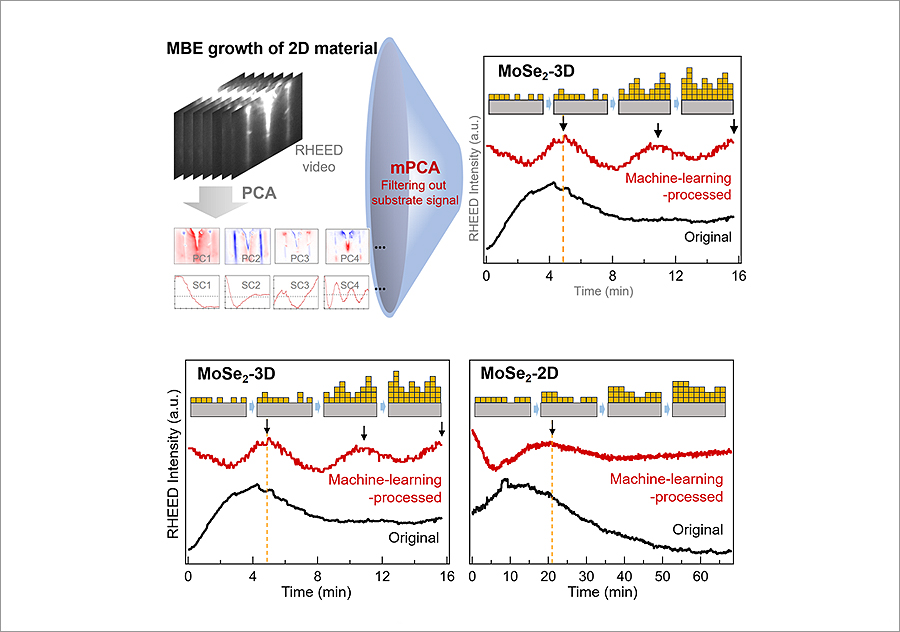Development of 2D Semiconductor Synthesis Technology Using Artificial Intelligence

- Physics professor Jang Youngjun's team applies artificial intelligence analysis to 2D semiconductor synthesis
- Presenting Core Technology for Developing Next-Generation Semiconductor Device development
Professor Jang Youngjun's research team from the Department of Physics at the University of Seoul announced that they have developed an AI analysis method to classify the synthesis process of 2D semiconductor thin films in collaboration with Professor Jung Huyoung from Ulsan National Institute of Science and Technology, Professor Youngmin Kim from Sungkyunkwan University, and Professor Heungsik Kim from Kangwon National University.
The findings were published on 16 June in Applied Surface Science (Impact factor: 6.7), a top-tier international journal in the field of materials science (coatings & thin films), published by Elsevier, The Netherlands, under the title 'Machine-learning-empowered identification of initial growth modes for 2D transition metal dichalcogenide thin films'.
 ▲ Research-related photos
▲ Research-related photos
The team used artificial intelligence to create very thin 2D semiconductor films. The team used an electron beam to observe the process in real time while stacking very thin 2D materials on top of graphene using the 'molecular beam epitaxy' (MBE) deposition technique. The results were analysed by AI to classify the growth state of the thin film. The AI analysis method for classifying the growth process of 2D semiconductor thin films in real time is expected to be applicable to the growth of various 2D semiconductor materials.
2D semiconductors are very thin semiconductor materials, one or a few atomic layers thick, with great potential for use in next-generation semiconductor fields such as low-power semiconductors and AI semiconductors. The AI-based synthesis technology developed in this research is expected to provide an important source technology for the development of next-generation semiconductor devices.
 ▲ Student Jung Minsoo (Left 1, Co-first Author), Lee Tae Kyu (Left 2, Co-first Author), Professor Jang Youngjun (Left 3, Co-corresponding Author), Dr Kim Hyukjin (Right, Co-corresponding Author)
▲ Student Jung Minsoo (Left 1, Co-first Author), Lee Tae Kyu (Left 2, Co-first Author), Professor Jang Youngjun (Left 3, Co-corresponding Author), Dr Kim Hyukjin (Right, Co-corresponding Author)
"The 2D semiconductor synthesis technology developed in this research is a key technology for automating semiconductor development using artificial intelligence," said Professor Jang Youngjun and Dr. Kim Hyukjin. "This technology can provide an important source technology for the development of semiconductor super-gap technology."
This research was supported by the Ministry of Science and ICT and the National Research Foundation of Korea through the Group Research Support Program, the Mid-Career Researcher Program, and the Creativity Research Foundation Program, and by the Research Institute of Chemical Technology.







